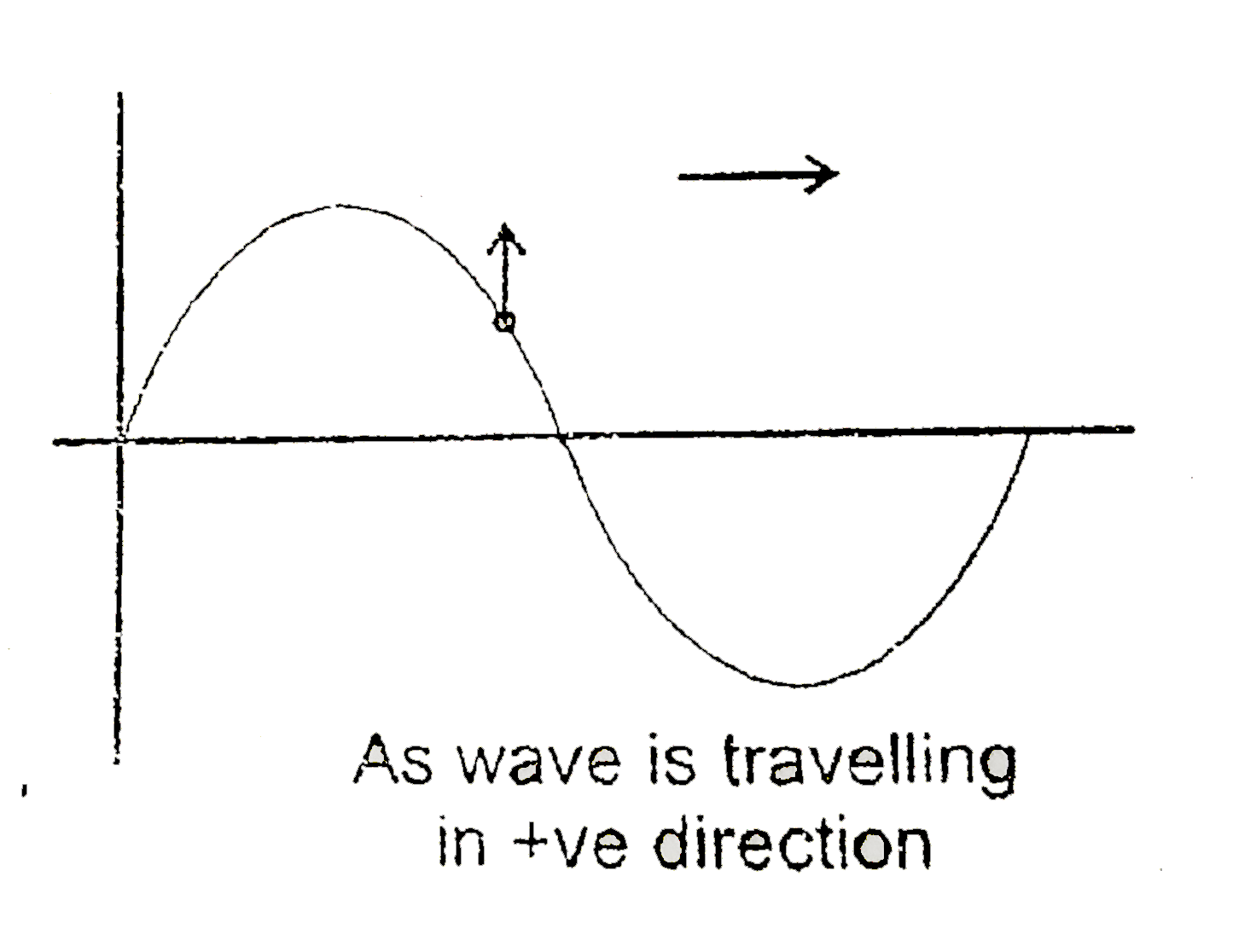When two progressive waves y1=4sin(2x−6t)andy2=3sin(2x−6t−π2) superimpose, the amplitude of the resultant wave is
The correct Answer is:A
V=ω√A2−y2
VP=2πf√A2−y2
VP=2π(Vλ)√A2−y2=2π0.5×0.1√(0.1)2−(0.05)2
VP=√3π50jm/s

Topper's Solved these Questions
- WAVE ON STRING BOOK - RESONANCE ENGLISHCHAPTER - WAVE ON STRING EXERCISE - Exercise- 3 PART II
7 Videos
- WAVE ON STRING BOOK - RESONANCE ENGLISHCHAPTER - WAVE ON STRING EXERCISE - Exercise- 2 PART IV
9 Videos
- TRAVELLING WAVESBOOK - RESONANCE ENGLISHCHAPTER - TRAVELLING WAVESEXERCISE - Exercise- 3 PART I
19 Videos
- WAVE OPTICSBOOK - RESONANCE ENGLISHCHAPTER - WAVE OPTICSEXERCISE - Advanced Level Problems
8 Videos
Similar Questions
Knowledge Check
Equations of two progressive wave are given by y1=asin(ωt+ϕ1) and y2=asin(ωt+ϕ2). IF amplitude and time period of resultant wave is same as that of both the waves, then (ϕ1−ϕ2) is
Aπ3B2π3Cπ6Dπ4
two waves y1=10sin(ωt−Kx) m and y2=5sin(ωt−Kx+π3) m are superimposed. the amplitude of resultant wave is
View SolutionIf two waves represented by y1=4sinωt and y2=3sin(ωt+π3) interfere at a point find out the amplitude of the resulting wave
View SolutionThe displacement of two interfering light waves are y1=4sinωt and y2=3cos(ωt). The amplitude of the resultant waves is (y1 and y2 are in CGS system)
View SolutionTwo waves represented by y=a sin(ωt−kx)andy=a sin(ωt−kx+2π3) are superposed. What will be the amplitude of the resultant wave?
View SolutionTwo waves represented by y=a sin(ωt−kx)andy=a sin(ω−kx+2π3) are superposed. What will be the amplitude of the resultant wave?
View SolutionTwo plane progressive waves are given as (y1=A1sin) (Kx−omrgat) and [y2=A2sin(Kx−ωt+ϕ)] are superimposed. The resultant wave will show which of the following phenomenon?
View SolutionTwo waves, whose equations are
y1=4sin(20t−x3)mandy2=3sin(20t−x3) m,
are superposed in a medium. Now,
View Solution
